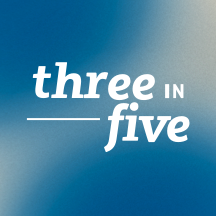Explore institutional insights
- Please enter a search term.
-
Insights
Stay up to date

Market update

Investor insights
-
Investments
Stay up to date

Market update

Investor insights
-
About us
Stay up to date
Learn more about our investment group

Market update

Investor insights
- Please enter a search term.
- Investments
-
Insights
- Back
- Insights
- Insights Overview
-
All insights
- Back
- All insights Overview
- Cash equitization: liquidity with flexibility
- Q3 2021: Investment grade private credit update
- Evaluating private credit opportunities in today’s market
- Leverage and derivatives, powerful tools for pension plans
- 2022 BentallGreenOak Perspective report
- Canadian Pension Risk Strategies 2022
- 2022 Mid-year Global Investment Outlook
- 2022 Corporate Responsibility Summary
- Q3 2022 Investment Grade Private Credit Market Update
- Q3 2022: Quarterly Inflation Watch
- Crescent Capital Markets Q3 2022 Update
- Multi-Asset Credit Strategy: October 2022 Update
- Update on the Real Return Bond Market
- SLC Management Update: real return bonds cessation announcement
- Multi-Asset Credit Strategy: November 2022 Update
- Multi-Asset Credit Strategy: December 2022 Update
- 2023 Global Investment Outlook
- Diversifying fixed income portfolios with alternatives
- Q4 2022: Quarterly Inflation Watch
- Q4 2022: Investment Grade Private Credit update
- Multi-Asset Credit Strategy: January 2023 Update
- Federal budget implications for Canadian preferred shares
- Q1 2023: Quarterly Inflation Watch
- Q1 2023: Investment Grade Private Credit update
- 2023 Mid-year Global Investment Outlook
- Q2 2023: Investment Grade Private Credit update
- July 2023: Inflation watch
- Q3 2023: Investment Grade Private Credit update
- September 2023: Inflation watch
- Narrowly syndicated credit: yield opportunities in an underexplored niche
- December 2023: Inflation Watch
- 2024 Global Investment Outlook
- Q4 2023: Investment Grade Private Credit update
- Looking under the hood at below-IG fixed income
- Q1 2024: Investment Grade Private Credit update
- Q1 2024: Inflation Watch
- Canadian Pension Risk Strategies 2024
- Insurance solutions
- Retirement plan solutions
- Sustainable Investing
- Market updates
-
Three in Five Podcast
- Back
- Three in Five Podcast Overview
- Mark Attanasio on the changing landscape of private credit
- James Slotnick on the U.S. midterm elections
- James Slotnick on the 2022 U.S. midterm elections
- Andrew and John on commonalities in investment grade private credit and narrowly syndicated bank loans
- Laila on operational considerations for investment grade private credit investors
- Cliff Corso on opportunity in the high net worth market
- Kate McKeon on sustainable investing and Net Zero
- Ben Greene on education, allyship, and the trans experience
- Melissa on the importance of the client experience
- Cristina Medina on Invest in Girls
- Steve on the Canadian P&C insurance market
- Rich and Peter on growing stress in the banking sector
- Doug on the debt ceiling
- Jim Blakemore on real estate debt
- Chris and Tim on the Special Financial Assistance Program for Taft Hartley plans
- Veronique on the evolution of LDI investing in Canada
- Chris Wright on the future of private credit
- Beth Brown on workplace burnout
- D.J. on the CMBS market
- Josh Davis on inner mastery and effective leadership
- James Slotnick on the politics of raising the U.S. debt ceiling
- Kevin Quinlan on climate change as a material investment risk
- Steve Peacher on the 10-year anniversary of SLC Management
- David Hamlin on fundamental credit research
- Michael Schnitman on alternatives in the high net worth space
- Steve Peacher reflects on challenges and milestones in 2023
- Subscribe
- About us
- Careers
- Contact us
- Newsroom
- Thank you
- CANADA | EN

Welcome!
Please select your country and language below:
Episode 60
JULY 27, 2022
Jack Paris on investing in the energy transition
Jack Paris, Head of Americas at InfraRed Capital Partners, discusses the growing trend towards investing in renewable infrastructure.
Steve Peacher: Hi everybody thanks for tuning in to this episode of “Three in Five,” it’s Steve Peacher SLC and today I’ve got Jack Paris with me, who has recently joined InfraRed as head of America's. Jack thanks for taking a few moments today.
Jack Paris: Steve, thanks for having me.
Steve Peacher: So we want to talk about the energy transition, renewable energy. And the term energy transition is often used in the marketplace when people think about, you know, moving toward renewable energy sources, but it has different meanings to different people so and I know infrared of course has a has a strategy that is based on the energy transition, it has a long term focus to your focus, so it could you just comment on, you know, when you think of energy transition, what does that mean and why and why do we feel like the strategy that InfraRed is overseeing is a good way to approach investing in the energy transition?
Jack Paris: Sure, I think we I think we have a very interesting strategy, it's underpinned by ESG friendly hard assets that produce stable long term cash flows that we think in the current environment with a fair amount of volatility is very interesting. So a central tenet of the energy transition is the production of clean, carbon free electricity. That's kind of central to the whole energy transition. And, as a result, one of the really big capital deployment opportunities within the energy transition is the build out of renewable energy assets. Renewable energy assets, such as wind, solar and hydro, tend to have very long asset lives, you know 35 years plus, in the case of hydro assets in excess of that as well. As I mentioned they're also characterized generally by producing fairly stable and recurring cash flows. In Europe, where the market for renewables is a little bit more advanced, we implemented a fairly interesting investment strategy around renewables, basically where we matched the duration of capital investment with the underlying asset life. And the reception to that approach has been extremely successful. So, in effect, what we're trying to do here in North America really is to replicate that same business model in North America because the market here, candidly, is a little further behind, it's not quite as developed. The European market for renewables is much more mature, so we believe that the growth prospects for that same strategy are very attractive here.
Steve Peacher: So, obviously renewables has been a big growth area, there are a lot of factors presumably behind that, but from your perspective, what are the biggest drivers driving growth in renewable energy infrastructure?
Jack Paris: Well, as you mentioned there's there are a number of drivers, but I would say clearly the growing social imperative to address climate change and to decarbonize our economy is amongst the biggest. The electric generation sector in the U.S. accounts for 27% of total greenhouse gas emissions, that's currently second only to the transportation sector, which stands at 28%. So they're basically the same size but, obviously one key way to decarbonize would be to change the way we produce electricity. In the U.S. today, approximately 61% of electrical generation is still produced from fossil fuel energy, so we think you know there's a real big opportunity to transition and deploy in capital the space. The other another key factor is the fact that there's been a declining cost curve around renewables, which is a real tailwind for the business. So prior to the recent run up in commodity prices, you know, related to the Ukraine Ukrainian war, renewables basically produced energy at level of cost of energy comparable to fossil fuels and comparable to natural gas. Post the run up in commodity prices the attractiveness of renewables is even greater. And then finally I’d say I think we're all becoming even more sensitive about energy independence and obviously renewables are domestically produced so it gets us on a path towards energy independence as well.
Steve Peacher: I want to ask about the renewables in the current market environment, so obviously we've seen a lot of volatility, we've seen rates move up, we've seen equities moved down and have increased, cost of capital is going up for projects. So how is all of that hitting impacting the renewable energy space?
Jack Paris: I think the opportunity set, notwithstanding some of those challenges, is still very, very attractive. For one, the demand for electricity is fairly inelastic you know, we obviously use it to heat and cool our homes, we use it to power our electronics and this provides a baseline of consumption that's fairly stable. However the new sources of demand, such as the transportation sector where increasingly we're looking to power our vehicles from electricity. So these movements to electrify our economy are actually growth catalysts for the renewal sector. Secondly, as I mentioned previously, the you know, the fact that we're seeing a real, pretty meaningful rise in underlying commodity prices. That, I think again bodes well for the future of renewables. From an investor, you know standpoint, or from a capital allocation of capital deployment perspective, renewables you know tend to produce because they're long life and their revenue streams are fairly well known. They produce stable and recurring cash flows, which I think in volatile environments tend to become more valuable. So look to be clear, there are clearly some challenges, you know, there might be some headwinds on the economic growth front with a potential recession, as you mentioned, higher financing costs and supply chain constraints, but, but this was a long-term strategy, and I think the ability to manage through this over the long term will be manageable for us.
Steve Peacher: Well, it certainly seems like this is a megatrend and that it will be impacted by, in the short term, but this is this is here to stay. There's just too many imperatives to get, to increase the infrastructure of renewable energies in the in North America and around the world. So, thank you for all those comments, let me end as we always do with a question on the personal front, I know from your often on the road either looking for new investments, talking to investors, etc., so outside of work how does, how does Jack Paris unwind?
Jack Paris: Well I’m a big hockey guy, I grew up in Toronto and I, you know, played competitive hockey most of my youth. I try to relive my youth every Saturday morning, I do a 6:45am skate with a bunch of guys in New Jersey and occasionally I jump on the bench and coach the girls, too so it's what I do to get my mind off the things.
Steve Peacher: Yea, well be careful out there, you know you're not a spring chicken, so you know we got to make sure you're healthy so. Well listen, thank you Jack for taking the time to talk about this, and thanks to everybody for dialing into this episode of “Three in Five.”
This podcast is intended for institutional investors. The information in this podcast is not intended to provide specific financial, tax, investment, insurance, legal or accounting advice and should not be relied upon and does not constitute a specific offer to buy and/or sell securities, insurance or investment services. Investors should consult with their professional advisors before acting upon any information contained in this podcast. This podcast may present materials or statements which reflect expectations or forecasts of future events. Such forward-looking statements are speculative in nature and may be subject to risks, uncertainties and assumptions and actual results which could differ significantly from the statements. As such, do not place undue reliance upon such forward-looking statements. All opinions and commentary are subject to change without notice and are provided in good faith without legal responsibility.



